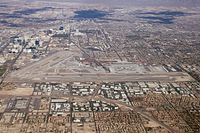
Photo from wikipedia
Airport terminals are key infrastructures with rapid development currently, where the air-conditioning (AC) systems aim to guarantee the normal operation. This research investigated the AC systems in seven Chinese hub… Click to show full abstract
Airport terminals are key infrastructures with rapid development currently, where the air-conditioning (AC) systems aim to guarantee the normal operation. This research investigated the AC systems in seven Chinese hub airport terminals by a large-scale on-site measurement. The average annual electricity consumption was 177 kWh/(m2 · year), in which 30–60% was consumed by AC systems. The terminal device of AC systems is one of the key components restricting the cooling performance. The commonly used terminal devices (i.e. air handling units) accounted for 40–74% of the AC electricity consumption. As an alternative, the AC system combining radiant floor and displacement ventilation could save 34% of the AC electricity consumption in one investigated airport terminal. Furthermore, the designed cooling capacities were 132–176 W/m2, while the measured values were only 43–90 W/m2. Thus, the AC systems, especially the terminal devices, should have the ability to adjust cooling capacity over a wide range to cope with this prevailing situation of low load rates. This study is beneficial for the design and operation of AC systems in airport terminals.
Journal Title: Indoor and Built Environment
Year Published: 2019
Link to full text (if available)
Share on Social Media: Sign Up to like & get
recommendations!